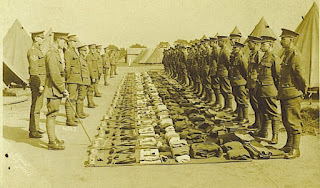A friend keeps a changing list of the five people she wants to have dinner with. It would be a one-time dinner party. The guests can be contemporary or from any time past.
I like the idea and decided to make my own version. I get to pick the dinner venue and get to say at what age my guest joins the party. Even if they are living, I want to say at what age they are at dinner. At dinner, everyone is fluent in English, or maybe everyone is fluent in French, but no translators: we understand each other.
Also, I added a sixth guest whom I know is on the top of the guest list of the majority of the current world.
1. Marie Curie at age 52. By the time Marie Curie was 52 years old, World War I had ended and she had achieved things no one thought possible. In 1903 at age 34 she received the Nobel Prize in Physics for pioneering research in radiation. Eight years later she received the Nobel Prize in Chemistry for the discovery of radium. She was the only person ever to win two Nobel Prizes in science. When World War I broke out she organized mobile x-ray labs that saved as many as a million lives of wounded soldiers. I want to talk to her when that terrible war is over.
2. Theodor Herzl at age 38. He is called the founder of Israel, yet he died more than 40 years before Israel became a country in 1948. Herzl was the founder of modern Zionism and inspired Jews around the world to see the possibility of a Jewish homeland after 2,000 years of exile. In 1898 he went to Jerusalem at the same time as the Kaiser of Germany went to petition the Kaiser for support for a Jewish homeland. I want to talk to him after that trip.
3. John F. Kennedy at age 44. With nuclear threats by Russia in the air, I want to talk to JFK after he faced down the Soviet Union in the Cuban Missile Crisis. The world was on the brink of nuclear war, and Kennedy brought the confrontation to a peaceful conclusion. Nikita Krushchev was out of power within two years after losing to Kennedy. There is a lot to love in what JFK did.
4. Alexis de Tocqueville at age 30. In 1831, Alexis de Tocqueville began a nine-month journey in America. He was 26. In 1835, when he was 30, the first volume of his Democracy in America was published. This 900-page book is the single best work ever published on politics in the United States of America, maybe the best book about America, period. Abridged versions omit the heart-rending descriptions of slavery and the treatment of the First Americans. When I read it again, I will read the translation by Harvey Mansfield. His lectures on Tocqueville are wonderful.
5. Thomas Jefferson at age 33. In his biography of Thomas Jefferson, Jon Meacham describes a man who in addition to all of his other qualities was a wonderful dinner guest. He would stop at a rural tavern and eat with whomever was at the table. One man wrote he only found out much later that the man who was curious about everything and everyone was also the man who wrote The Declaration of Independence. In 1776 when he wrote the founding document of America, Jefferson was 33. In his draft, Jefferson called for the abolition of slavery in the new nation. The Continental Congress removed the passage. I would like to have Jefferson at dinner before he became the 3rd President of the U.S. In a famous toast at a White House dinner in honor of 49 Nobel Prize winners, President John F. Kennedy said,
“I think this is the most extraordinary collection of talent, of human knowledge, that has ever been gathered together at the White House, with the possible exception of when Thomas Jefferson dined alone.”
6. Volodymyr Zelenskyy this month. Courage is always admirable and the center of the universe on the subject of courage is the President and people of Ukraine. At the beginning of 2022, Volodymyr Zelensky was the unpopular President of a poor country. Now he is Winston S. Churchill in Eastern Europe, the spokesperson for Democracy, the leader of the nation fought the Russian army to a standstill against every prediction. Zelenskyy is 44 years old. May he live to be 100.
----
Where with the dinner take place? At Maison Fournaise. I wrote about this restaurant earlier this week. It is a victim of COVID, but it can come back for this dinner. We will eat on the porch where Renoir painted "The Boating Party."


























